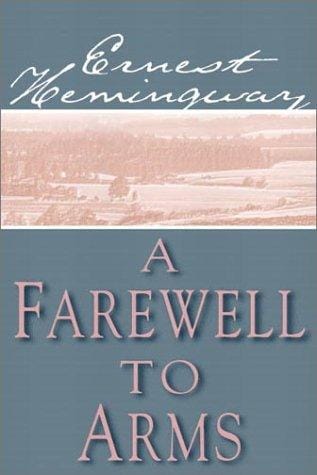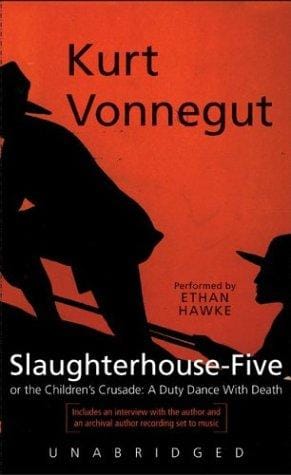Exploring A Farewell to Arms: Summary, Themes, and Enduring Legacy

Introduction to A Farewell to Arms
Ernest Hemingway’s 1929 novel "A Farewell to Arms" remains a cornerstone of twentieth-century literature, admired for its spare prose, intense romance, and unflinching depiction of war. Set against the chaotic backdrop of World War I, the book follows an American lieutenant in the Italian ambulance corps and his passionate affair with a British nurse. Since its publication, the novel has sparked debate, inspired film adaptations, and earned a lasting place in classrooms and on best-of lists. This article offers a concise summary, explores key characters and themes, and explains why Hemingway’s classic still resonates with modern readers.
Plot Summary
Book One: Meeting Catherine Barkley
"A Farewell to Arms" opens in northern Italy, where Lieutenant Frederic Henry serves as an ambulance driver. War is both distant and omnipresent: bursts of artillery echo in the hills while soldiers seek brief reprieve in cafés. Frederic’s friend Rinaldi introduces him to Nurse Catherine Barkley, whose fiancé was recently killed in combat. What begins as playful flirtation soon becomes a meaningful connection for both characters, foreshadowing the central tension between love and war that propels the story.
Book Two: Love Amid Chaos
After Frederic is wounded on the front lines, he is transported to a Milan hospital where Catherine is also stationed. Away from the trenches, their relationship deepens, evolving from solace into genuine love. The couple creates a private world inside a landscape shattered by conflict, underscoring Hemingway’s recurring motif that human connection can offer fragile sanctuary. Yet even in Milan, reminders of war persist: Frederic undergoes painful surgeries, and news of fresh offensives looms.
Book Three: Retreat and Disillusionment
Once healed, Frederic returns to duty just as the Italian army faces a crushing defeat at Caporetto. Hemingway’s stark depiction of retreat—mud-choked roads, panicked soldiers, and summary executions—exposes the futility of the campaign. Disillusioned, Frederic deserts, escaping the chaos and making his way back to Catherine. His desertion marks a pivotal break with military ideals, suggesting that personal loyalty now outweighs patriotic obligation.
Book Four: Escape to Switzerland
Catherine reveals she is pregnant, and the lovers flee to neutral Switzerland by rowing across Lake Maggiore under cover of night. In the peaceful alpine setting of Montreux, they experience brief domestic happiness. Hemingway juxtaposes exhilarating freedom with an undercurrent of dread, reminding the reader that external tranquillity cannot erase the looming uncertainties of war and childbirth.
Book Five: Tragedy and Farewell
As Catherine’s pregnancy advances, the couple relocates to Lausanne for better medical care. The novel’s climax arrives in a harrowing sequence where Catherine endures a prolonged and complicated labor. Both mother and stillborn child die, leaving Frederic alone in the hospital corridor. The final pages capture his silent exit into the rain, an image that epitomizes Hemingway’s minimalist style and the stark reality that neither love nor courage guarantees salvation.
Main Characters
Frederic Henry narrates the story in a detached, matter-of-fact voice. His journey from carefree expatriate to war-weary deserter mirrors the broader disillusionment of a generation shattered by global conflict. Frederic’s understated language masks profound internal turmoil, emphasizing Hemingway’s “iceberg theory” of writing.
Catherine Barkley initially appears as a romantic ideal, yet Hemingway imbues her with resilience and agency. Her devotion to Frederic, while intense, is also pragmatic: she seeks meaning after personal loss. Catherine’s tragic end provokes ongoing critical discussion about gender roles in Hemingway’s fiction.
Rinaldi, Frederic’s jovial surgeon friend, personifies camaraderie and hedonism. His cracking bravado in the face of relentless warfare underscores the psychological toll exacted on soldiers.
Major Themes
Love Versus War
The push-and-pull between intimacy and violence dominates the narrative. Hemingway positions Frederic and Catherine’s relationship as a counterforce to the carnage raging outside hospital doors and alpine chalets. Ultimately, the war intrudes irrevocably, illustrating the fragility of private happiness.
Loss and Disillusionment
From the opening description of shell-torn landscapes to the stark ending in the rain, loss permeates every page. Frederic’s evolving cynicism reflects a broader cultural shift in post-war Europe and America, where traditional ideals of honor and heroism seemed hollow in the face of mechanized slaughter.
Chance and Fate
Hemingway infuses the narrative with randomness: a mortar shell shatters Frederic’s knee, a bureaucrat checks papers at the border, a medical complication ends Catherine’s life. These events emphasize the limits of human control, reinforcing a modernist worldview where fate is indifferent and often cruel.
The Search for Meaning
Characters drink, pray, make love, and dream of future worlds beyond the front lines. Their varied distractions highlight a universal quest for purpose amid chaos. Frederic’s concluding walk into the rain elicits questions rather than answers, inviting readers to evaluate their own responses to tragedy.
Hemingway’s Style and Symbolism
"A Farewell to Arms" epitomizes Hemingway’s trademark economy of language. Short declarative sentences, precise dialogue, and minimal interior monologue compel readers to infer deeper emotion beneath the surface. Symbolism, though subtle, punctuates the text: rain frequently signals doom; rivers represent both division and escape; the Alps stand as an illusory haven. This interplay of sparse prose and suggestive imagery renders the novel a masterclass in modernist technique.
Historical and Literary Impact
The novel’s candid portrayal of battlefield brutality and its critique of military command were groundbreaking in 1929, leading some nations to censor early editions. Hemingway’s frank treatment of sexuality and childbirth similarly challenged social norms. Over time, "A Farewell to Arms" has influenced war literature from Joseph Heller’s "Catch-22" to Tim O’Brien’s "The Things They Carried," while pop culture references continue to introduce the story to new audiences.
Why "A Farewell to Arms" Still Matters
Nearly a century after its debut, the novel’s core questions—How do individuals preserve humanity amid senseless conflict? Can love survive in a world governed by chance?—remain urgent. Students dissect its minimalist sentences; veterans recognize the authenticity of Frederic’s despair; lovers empathize with Catherine’s devotion. By laying bare the raw intersections of passion and devastation, Hemingway created a timeless meditation on the human condition.
Conclusion
"A Farewell to Arms" endures because it offers no easy answers. Instead, Hemingway delivers a realistic tapestry woven from desire, duty, and mortality. Readers emerge with a deeper appreciation for both the resilience and the vulnerability of the human spirit. Whether you approach the novel for its gripping wartime narrative, its poignant romance, or its masterful prose, the experience of reading remains as affecting today as it was in 1929.



